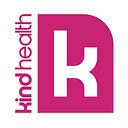What is an HRA and How Can It Help You Control Healthcare Costs?
You may have heard of a HSA, FSA, and even HDP when it comes to health insurance, but there’s another acronym you may not be as familiar with: HRA.
HRAs, or health reimbursement arrangements, are becoming more and more popular as healthcare costs continue to skyrocket.
While these types of arrangements have been around for decades, they weren’t formally defined by the IRS until 2002. New types of HRAs have been added as recently as 2020 as a way to help employers and consumers better control their healthcare costs.
What is an HRA?
An HRA is an employer-funded benefit used to reimburse employees for medical expenses. In some cases, this includes health insurance premiums and deductibles. These types of plans can be offered in addition to, or in place of, traditional group insurance plans. Health reimbursement arrangements are touted as a great way for both businesses and their employees to save money and control costs.
Unlike traditional group health insurance, HRAs can be set up to allow employees to shop for their own health insurance plans instead of opting into a plan selected by the employer. HRAs can also be set up so employees can use the funds to pay for things that traditional health insurance may not cover.
Types of HRAs
There are several different types of HRAs that may be offered to employees.
Integrated HRA
An integrated HRA must be used alongside a traditional group health insurance plan. This type of health reimbursement arrangement is designed to help employees cover out-of-pocket healthcare costs. Integrated HRAs can be used in place of or as another option alongside health saving accounts (HSAs) and medical flexible spending accounts (FSAs). Employees, however, are not eligible to contribute to their HRA.
Individual Coverage HRA
The individual coverage HRA allows employers to use health reimbursement arrangements in place of group health insurance. With this type of HRA, employees have a set amount of money they can use to shop for individual healthcare coverage. This gives them the flexibility to choose a plan that works best for their needs and budget.
Excepted Benefit HRA (EBHRA)
The excepted benefit HRA (EBHRA) is a health reimbursement arrangement that covers out-of-pocket medical expenses and premiums for healthcare costs that aren’t normally covered by insurance like dental, vision, or COBRA premiums.
Qualified Small Employer HRA (QSEHRA)
A qualified small employer HRA (QSEHRA) lets employers provide funds to employees to be used for eligible expenses, including insurance premiums. As the name implies, only small employers — those with no more than 50 employees — are eligible to offer a QSEHRA.
How Does an HRA Work?
While there are many types of HRAs, they’re all used by employees in similar ways:
- The employer sets the allowance limit — this lets employees know up front how much money is available for them to spend and what they can spend it on.
- Employees make purchases or pay for care — employees choose how to spend their money, which could include health insurance premiums, braces, or anything in between. What counts as “qualified” is defined by the employer and the type of HRA they offer.
- Employees submit proof of expenses — employees must submit proof of their qualified expense (usually in the form of a receipt) to their employer.
- Employers review the expense — the business reviews the employee’s documentation, and if an expense is qualified and includes appropriate documentation, the employer will approve the expense.
- Employees are reimbursed — after an expense has been approved, the employee will receive reimbursement. Unlike HSAs or FSAs, there is no money up front. Employees must pay for their expenses to be reimbursed.
The Benefits of HRAs to Employees/Consumers
HRAs have many benefits for both the employer and the employee.
For employees (or consumers), health reimbursement arrangements offer more choices for where and how they get the care they need. Instead of needing to choose from only 2–3 plan options that an employer can provide, the employee is able to shop on insurance marketplaces like KindHealth for the plan that best fits their needs and budget. Individual coverage HRAs allow consumers to choose the health insurance plan, network, and price that works best for them. This type of flexibility lets families choose their doctors and have access to the hospitals and clinics that appeal most to them.
Employees can also use HRAs to save on medical costs without using their personal funds. Many employees choose health reimbursement arrangements to help with budgeting for healthcare expenses because they know at the beginning of the year how much money they will have available to them. They can then use these funds for offsetting deductibles or premiums, or to pay for medical expenses not covered by insurance.
Health reimbursement arrangements are also tax-free to both the consumer and the employer. As long as HRA money is spent on qualified expenses, employees won’t be taxed as funds in HRA accounts don’t count as taxable income.
Tap into the Potential of HRAs with KindHealth
At KindHealth, we’re helping thousands of Americans with traditional or individual health plans get health insurance, save on prescription medications, and reduce their medical expenses. Get a free quote today!
We’re building technology that will seamlessly integrate with any health reimbursement arrangement. This technology will help employers and consumers take advantage of the untapped potential of their HRAs. Soon, the growing number of people with HRAs will have the opportunity to use the convenient technology and learn more about their healthcare options.

